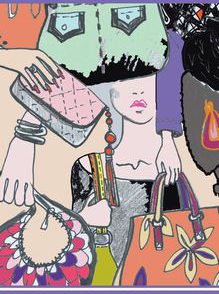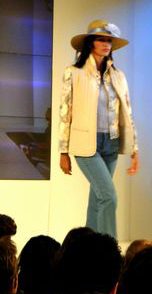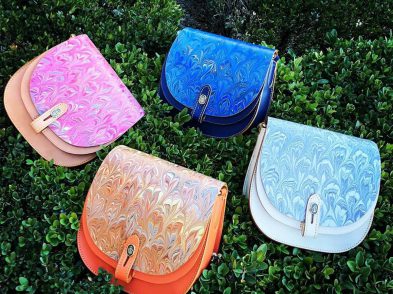In the summer of 1949, a Marchese, a scion of an aristocratic Tuscan family, created his very first clothing line, all in black and white. By the time his house of fashion was born in 1951, he’d found his pale turquoise, his sea green, his lemon yellow, and his Pucci pink that would make this Marchese fashion royalty and the king of prints. His genius for colour, his sensitivity for form and geometric patterns made his clothing look like a walking Mattise.
He is credited with the invention of Capri pants. He created lounge wear for Elizabeth Taylor, Lauren Bacall and Grace Kelly…later to become cult objects. He is considered to be the first Italian designer to compete with the French labels, and if that doesn’t impress you, he was also on the Italian Olympic ski team. Emilio Pucci passed away in 1992, but his legacy lives with his label that is now part of the LVMH(Louis Vuitton Moet Hennessy) conglomerate, and his Palazzo Pucci on Via Pucci bustles with young talent that reinvents his swirling patterns that captured the look of the sixties.
One of those young designers is Mirko Bottai. He is tall and sun-kissed, and on the day of our meeting, he is wearing a bold purple and pink Pucci shirt that few other men could pull off. As he approaches me on his bicycle, his boyish charm, regal aura, and genuine smile make me wonder if he isn’t also a Marchese. But no, Mirko is just an average 24 year old from Chianti — humble and auspicious considering he has the mammoth task of working in the graphic studio for a label like Emilio Pucci. When I moved to Florence as a young fashion student I was obsessed with Pucci. Then when they became part of LVMH I felt like my favourite brand was selling its soul. Now I finally had a chance to get the low-down on today’s Pucci and find out what was really going on in that lionised palazzo.
As we sit down for lunch in Piazza Santo Spirito, I ask Mirko about this historical brand and its relationship with Florence. He smiles and recounts that all of the prints Pucci designed were inspired by the city and its art — its colours and its forms: “There are prints of the Cupole and Piazza San Giovanni,” he tells me and you can tell he can see the prints in front of him as he describes their movement.
Mirko studied at Polimoda, and after his studies he got lucky and was placed at the coveted Pucci Palace for his internship. He interned there for a year before becoming part of the Pucci team. “It is such a unique experience working for Pucci on Via Pucci in Palazzo Pucci,” he says genuinely. “I feel inspired from the time I walk into the building in the morning, until when I leave at night.”
I wonder how the process of designing the prints works – does he design from scratch? Do they only use archive prints? “We have an immense and meraviglioso archive, with literally thousands of prints at our fingertips,” he explains, and I listen, enviously. “We sometimes use these treasures and change them slightly, but sometimes we create prints from nothing. What is most important is that the prints always look like Pucci. We travel along two tracks: tradition and innovation. We are sensitive to both the current trends and the tradition that Pucci has set up… But we are not as interested in following trends as we are in starting them.”
As a designer myself, I think about what it would be like to have such a strong legacy to follow; Mirko has to design every minute in someone else’s style. When I ask if he ever feels limited by those constraints, he thinks about it for a moment and then replies, “It’s not a limitation, but a challenge, Designing in his style is something that is so specific, but also leaves so much room for my own creativity… and Christian Lacroix, [the creative director of Pucci since 2002] helps… he is a mago di colore [colour magician], and when he is here he seems like a child in a toy factory… it’s marvellous!”
By the end of our conversation, it became clear that I wasn’t going to get any dirt on Pucci. Designing for the label was every bit as dreamlike as I had always imagined: employees wake up in the morning, bike to the style office in the centre of Florence, meet up with a fun, international crowd of young designers, listen to music, lounge around on huge Pucci pillows and Pucci couches while creating some of the most beautiful prints in the world. That left me with only one more question for Mirko: are they hiring?







